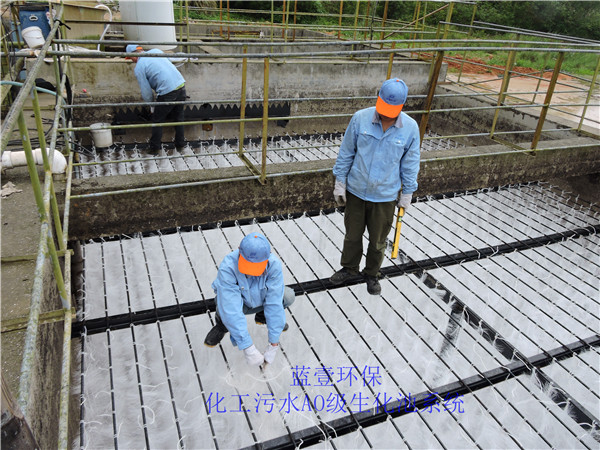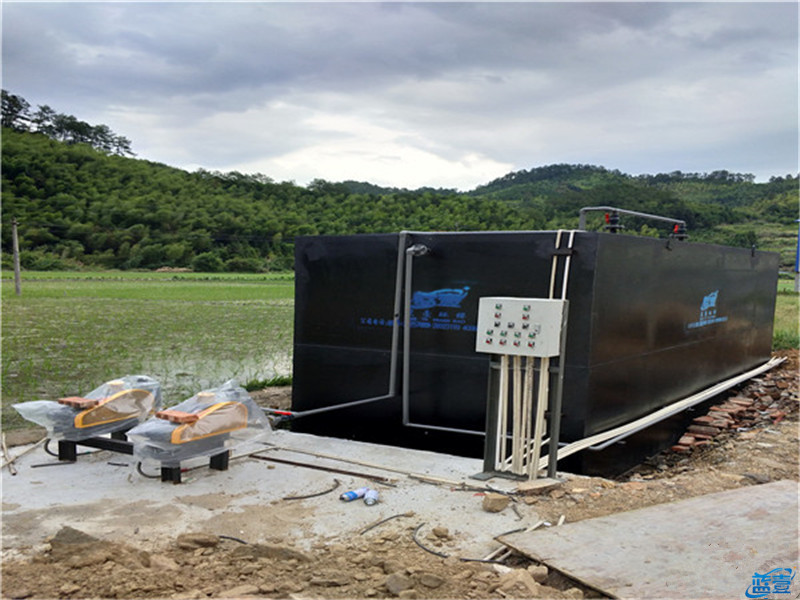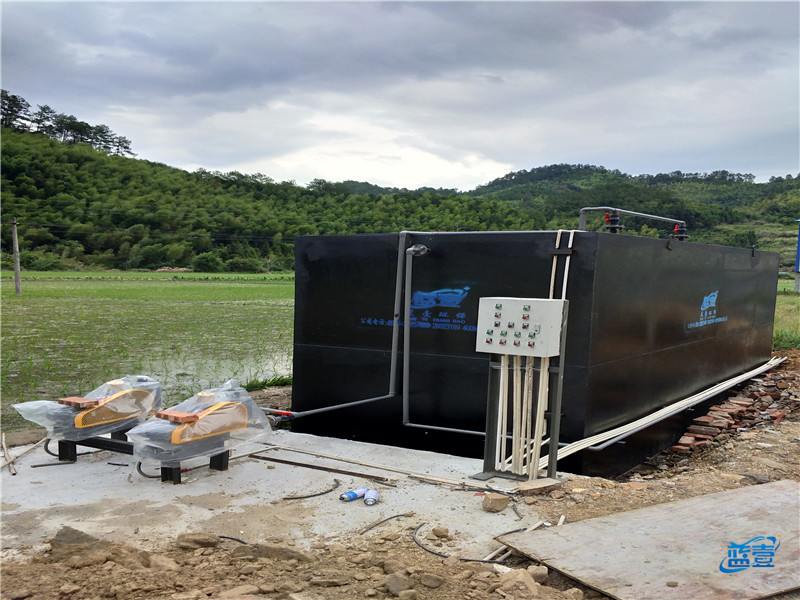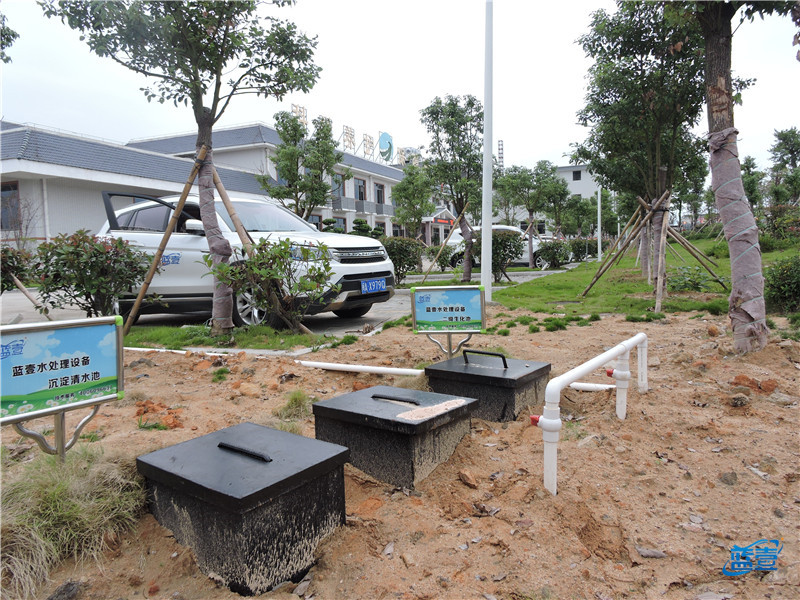+
 WeChat:切换按钮及底部微信
WeChat:切换按钮及底部微信

 WeChat:切换按钮及底部微信
WeChat:切换按钮及底部微信

Chemical wastewater treatment plan
Principle of chemical wastewater treatment: The typical activated sludge process consists of an aeration tank, a sedimentation tank, a sludge reflux system, and a residual sludge removal system.
Principle of chemical wastewater treatment: The typical activated sludge process consists of an aeration tank, a sedimentation tank, a sludge reflux system, and a residual sludge removal system.
activated sludge process
Sewage and recycled activated sludge enter the aeration tank together to form a mixed liquid. The compressed air sent from the air compressor station enters the sewage in the form of small bubbles through the air diffusion device laid at the bottom of the aeration tank, with the aim of increasing the dissolved oxygen content in the sewage and keeping the mixed liquid in a state of vigorous agitation and suspension. Dissolved oxygen, activated sludge, and sewage are mixed and fully contacted with each other, allowing the activated sludge reaction to proceed normally.
In the first stage, organic pollutants in sewage are adsorbed onto the surface of microbial flocs by activated sludge particles, due to their large specific surface area
And polysaccharide viscous substances. At the same time, some large organic molecules are decomposed into small organic molecules by bacterial extracellular enzymes. In the second stage, under conditions of sufficient oxygen, microorganisms absorb these organic compounds and oxidize and decompose them to form carbon dioxide and water, with a portion of them being supplied
Promote one's own proliferation and reproduction. The result of the activated sludge reaction is that organic pollutants in the sewage are degraded and removed, and the activated sludge itself is able to Reproduction and growth allow sewage to be purified and treated.
After being purified by activated sludge, the mixed solution enters the secondary sedimentation tank, where suspended activated sludge and other solid substances settle and separate from water. The clarified sewage is discharged as treated water from the system. After sedimentation and concentration, the sludge is discharged from the bottom of the sedimentation tank, and most of it is used as inoculated sludge and returned to the aeration tank to ensure the concentration of suspended solids and microorganisms in the aeration tank; The proliferating microorganisms discharged from the system are called "residual sludge". In fact, pollutants are largely transferred from sewage to these residual sludge.
The principle of activated sludge process can be described as follows: microorganisms "eat" the organic matter in the sewage, turning it into clean water. It is essentially similar to the natural self purification process of water bodies, except that through artificial enhancement, the effect of sewage purification is better.
activated sludge process
Sewage and recycled activated sludge enter the aeration tank together to form a mixed liquid. The compressed air sent from the air compressor station enters the sewage in the form of small bubbles through the air diffusion device laid at the bottom of the aeration tank, with the aim of increasing the dissolved oxygen content in the sewage and keeping the mixed liquid in a state of vigorous agitation and suspension. Dissolved oxygen, activated sludge, and sewage are mixed and fully contacted with each other, allowing the activated sludge reaction to proceed normally.
In the first stage, organic pollutants in sewage are adsorbed onto the surface of microbial flocs by activated sludge particles, due to their large specific surface area
And polysaccharide viscous substances. At the same time, some large organic molecules are decomposed into small organic molecules by bacterial extracellular enzymes. In the second stage, under conditions of sufficient oxygen, microorganisms absorb these organic compounds and oxidize and decompose them to form carbon dioxide and water, with a portion of them being supplied
Promote one's own proliferation and reproduction. The result of the activated sludge reaction is that organic pollutants in the sewage are degraded and removed, and the activated sludge itself is able to Reproduction and growth allow sewage to be purified and treated.
After being purified by activated sludge, the mixed solution enters the secondary sedimentation tank, where suspended activated sludge and other solid substances settle and separate from water. The clarified sewage is discharged as treated water from the system. After sedimentation and concentration, the sludge is discharged from the bottom of the sedimentation tank, and most of it is used as inoculated sludge and returned to the aeration tank to ensure the concentration of suspended solids and microorganisms in the aeration tank; The proliferating microorganisms discharged from the system are called "residual sludge". In fact, pollutants are largely transferred from sewage to these residual sludge.
The principle of activated sludge process can be described as follows: microorganisms "eat" the organic matter in the sewage, turning it into clean water. It is essentially similar to the natural self purification process of water bodies, except that through artificial enhancement, the effect of sewage purification is better.
Previous: Spray painting wastewater treatment plan
Next: Guidelines for the Operation of Medical Wastewater Treatment Process Plan
【Related articles】
【Related Products】
-
Telephones:0371-88912366 0371-88912399
-
Service Hotline:4006096637(technology)
-
Address:Unit 303, Building 5, Zhangwuzhai No.2 Courtyard, Sequoia Road, Zhengzhou High tech Zone, Henan Province
-

Add WeChat
Copyright Notice: The content published on this website may not be downloaded, reproduced or mirrored without the permission of this website and the author. Violators will be held legally responsible by this website.









 home
home
 WeChat
WeChat
 telephones
telephones